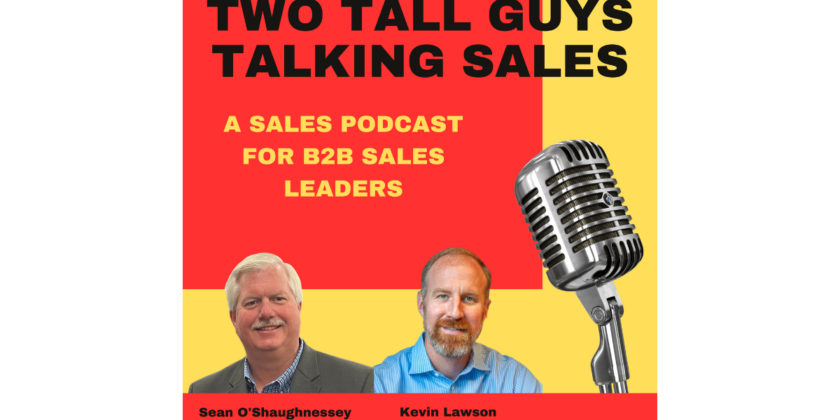The foundation of success in B2B sales lies in the ability to close deals and the strategic planning and objective setting that precedes any sales activity. This article offers a roadmap for salespeople, sales managers, and CEOs of small companies keen on refining their sales strategies and bolstering their management capabilities.
Connecting your sales objectives with your company’s long-term goals is central to developing an effective sales strategy. Sales leaders should cast a vision for where they want their company to be in five years and reverse-engineering the steps necessary to get there. This approach transcends the conventional wisdom of aiming for a marginal improvement over last year’s performance. Instead, it challenges sales teams to envision a trajectory that aligns with the company’s broader objectives, ensuring that each year’s goals are not mere increments but significant strides toward long-term success.
The critical takeaway here is the importance of setting objectives that are ambitious yet grounded in the realities of your business landscape. Leadership should balance aspirational goals and achievable targets, ensuring that the sales team is motivated but not overwhelmed by the challenges ahead. This process involves a deep dive into your company’s performance, understanding the stable segments of your business, identifying areas ripe for growth, and recognizing potential challenges that may impede progress.
This strategic planning adds complexity for small businesses and startups, where the distinction between sales leadership and the sales force can sometimes blur. Sales objectives must be crafted not only to drive growth but also to ensure sustainability. This involves careful consideration of your sales team’s capacity, the operational support necessary to sustain growth, and the potential financial implications of aggressive sales targets.
Moreover, the process of setting sales objectives is not a solitary endeavor but a collaborative exercise that benefits from diverse perspectives. Whether you’re a seasoned sales leader or a CEO navigating the sales landscape for the first time, exchanging ideas and experiences can illuminate pathways to success that may not be immediately apparent. It’s a dialogue that stretches beyond the confines of your organization, tapping into a broader community of sales professionals who share the common goal of driving their companies forward.
The journey towards setting and achieving meaningful sales objectives is both an art and a science. It requires a clear vision, a deep understanding of your business, and the flexibility to adapt to changing circumstances. By adopting a strategic approach to sales planning, you position your company not just to meet its sales targets but to exceed them, ensuring a trajectory of growth and success that is both ambitious and attainable.
Immediate action items that you can do today to improve your business
To transform these insights offered into actionable steps, here are three immediate action items that readers can undertake today to start realigning their sales strategies for enhanced growth and success:
1. Conduct a Vision-Setting Exercise
Start by dedicating time for a vision-setting exercise with your key sales leaders and stakeholders. The goal is to outline where you envision the company in the next five years. This should not be a cursory glance at the future but a detailed session where you map out the long-term goals of your company and how the sales team can contribute significantly to achieving these objectives. Consider the broader impact of your sales goals on the company’s trajectory. After this session, distill the insights into a concise vision statement that aligns with your company’s long-term objectives.
- Actionable Advice: Schedule a half-day workshop dedicated to this vision-setting exercise within the next week. Prepare by gathering data on your company’s past performance, current market trends, and any forecasts that can inform your discussion.
2. Evaluate Your Current Sales Strategy
Critically examine your current sales strategy. This involves analyzing your sales performance, understanding your business’s stable and high-growth segments, and identifying any potential roadblocks hindering progress toward your newly set objectives. It’s an opportunity to reassess and adjust your approach based on a realistic appraisal of what has been working and what hasn’t.
- Actionable Advice: Create a checklist for evaluation that covers key areas of your sales strategy. This should include sales processes, team capabilities, market positioning, and aligning sales targets with your overall business goals. Begin this evaluation immediately, aiming to have preliminary findings within two weeks.
3. Foster a Culture of Collaboration and Continuous Learning
The sales objectives should be a collaborative effort involving input from across your organization. Foster a culture where sales teams feel empowered to share insights and feedback. Encourage your team to continuously learn and adapt, recognizing that the sales landscape is ever-changing. Building this culture of collaboration and flexibility will ensure that your sales strategy remains dynamic and responsive to your business’s and the market’s needs.
- Actionable Advice: Organize a monthly sales meeting to share insights, challenges, and learning experiences from within and outside your team. This should be a platform for open dialogue, encouraging innovation and adaptability in your sales strategies. Start planning the first of these meetings today, setting a date within the next month.
By implementing these immediate action items, sales leaders and business owners can begin the process of refining their sales strategies to be more aligned with their long-term business objectives. These steps are designed not only to catalyze strategic thinking and planning but also to ensure that the execution of these plans is practical, collaborative, and continuously evolving in response to both internal and external business dynamics.







